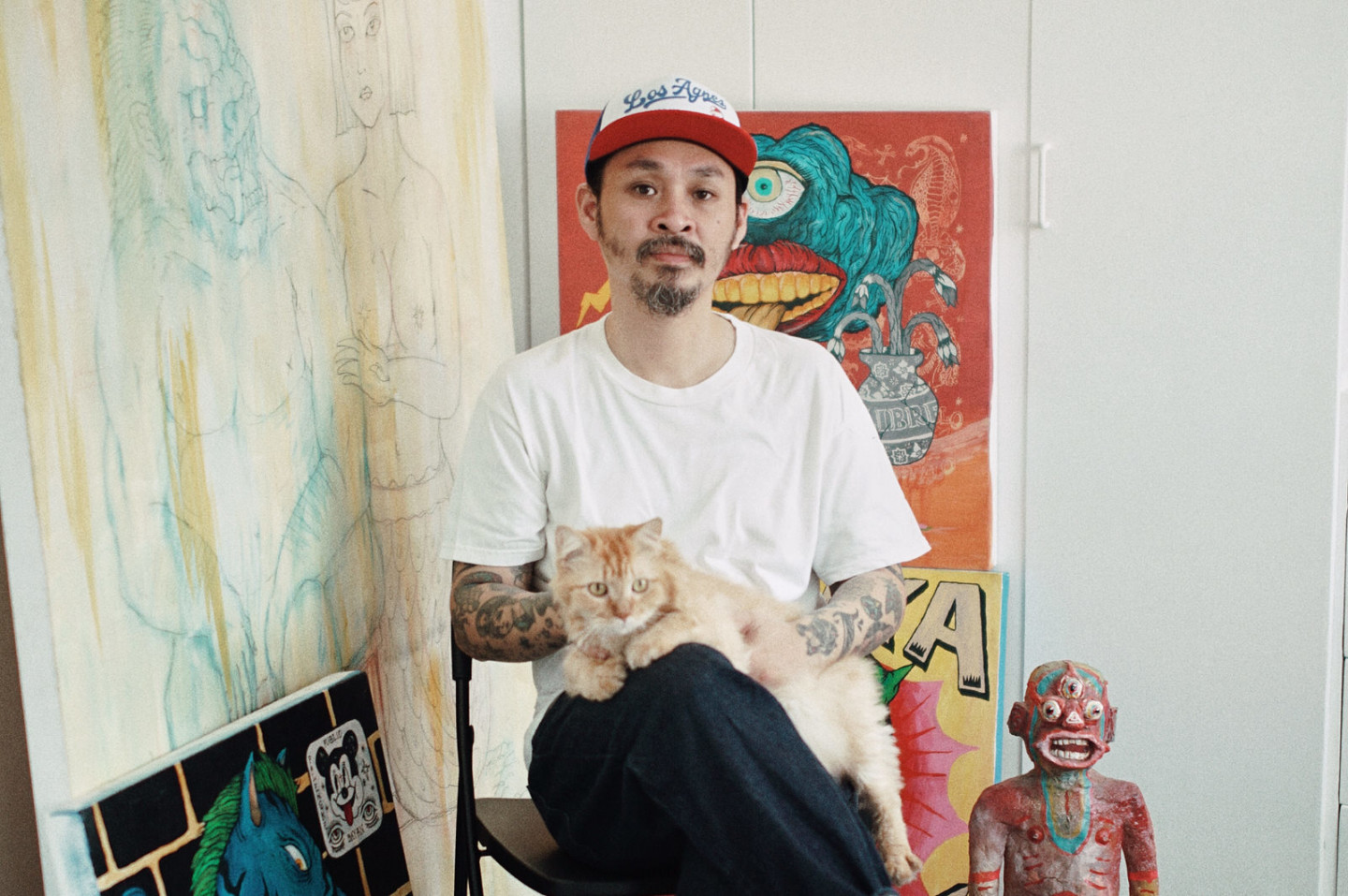
“What will your job be?”
Creatives often get asked this question. Society has been conditioned to think that to have a viable career, one must have a clear-cut path drawn—a five-year plan, a title, and a 9-5 job to spend your weekdays.
But this trajectory is rare for creatives. Perhaps a key factor is exploring fields, environments, and even various art forms. Auggie Fontanilla is no stranger to this. A multi-faceted creative who has dipped his toes in various industries such as publishing, merchandise, street art, and even the academe, Auggie shares with us his creative journey, his experiences in various industries, and how he has carved and continues to carve his path as a creative.
First, can you tell us something about yourself and what you do?
I’m Auggie Fontanilla. I’m a visual artist who loves to draw and paint on canvas—or the streets as a graffiti artist before the pandemic. I often roam around Metro Manila, and I usually hang out at Cubao Expo, but I often stay at home too. I also do design work for local and international brands.
You delved in a lot of different art forms from street art to design for publications to illustrations and other design projects, can you describe your creative journey?
The short story is that ever since I was a kid, I was really interested in drawing, joining art contests, and enrolling in summer art school so I studied Fine Arts Major in Advertising in college. It was there that I got exposed to various art forms. But since I was in the Advertising track, I initially wanted to work after graduation in an ad agency. . However, I ended up in publication instead.
During my time in the publication, I learned true discipline at work, as well as design and layout. However, I knew that my heart was somewhere else, so after about seven years in publication, I resigned even though I didn’t have any backup plan. I just knew I wanted to be a full-time ‘artist’ then.
I experienced the true struggle of being an artist, particularly with finances because, as I mentioned, I didn’t have any backup plan. Because of that, I had to work to the best of my abilities by taking on various projects and rackets (or stints). I had to show everything I got.
Even though I struggled a bit, I was really happy because I finally had the time to pursue my personal projects and creative process. Along the way, I also became a part of THE Clothing and Pilipinas Street Plan and joined various art exhibits. I also taught art and design in a university. All of these experiences formed my creative journey and led me to where I am now.
It was a difficult undertaking, but it was also so much fun. In the end, as long as you enjoy what you’re doing, the struggles will all be worth it.
That’s a pretty eventful journey so let’s delve deeper. What skills did you leverage in to navigate your way through the struggles when you first started being a full-time artist?
I owe a lot of it to hard work; I just kept working, taking on projects, and proving myself and my work. In addition to that, building my connections—regardless of the field—played a big role. And as I was doing all of that, I never stopped learning, honing my current skills, and acquiring new ones. I never stopped creating and just kept drawing everyday to exercise my muscle memory so that I won’t forget my drawing techniques.
Luckily, I had my stint in publication so that really became my edge. That helped hone my eye for layout and design and understand juxtapositions of elements on paintings and other works of art. Those skills were really helpful.
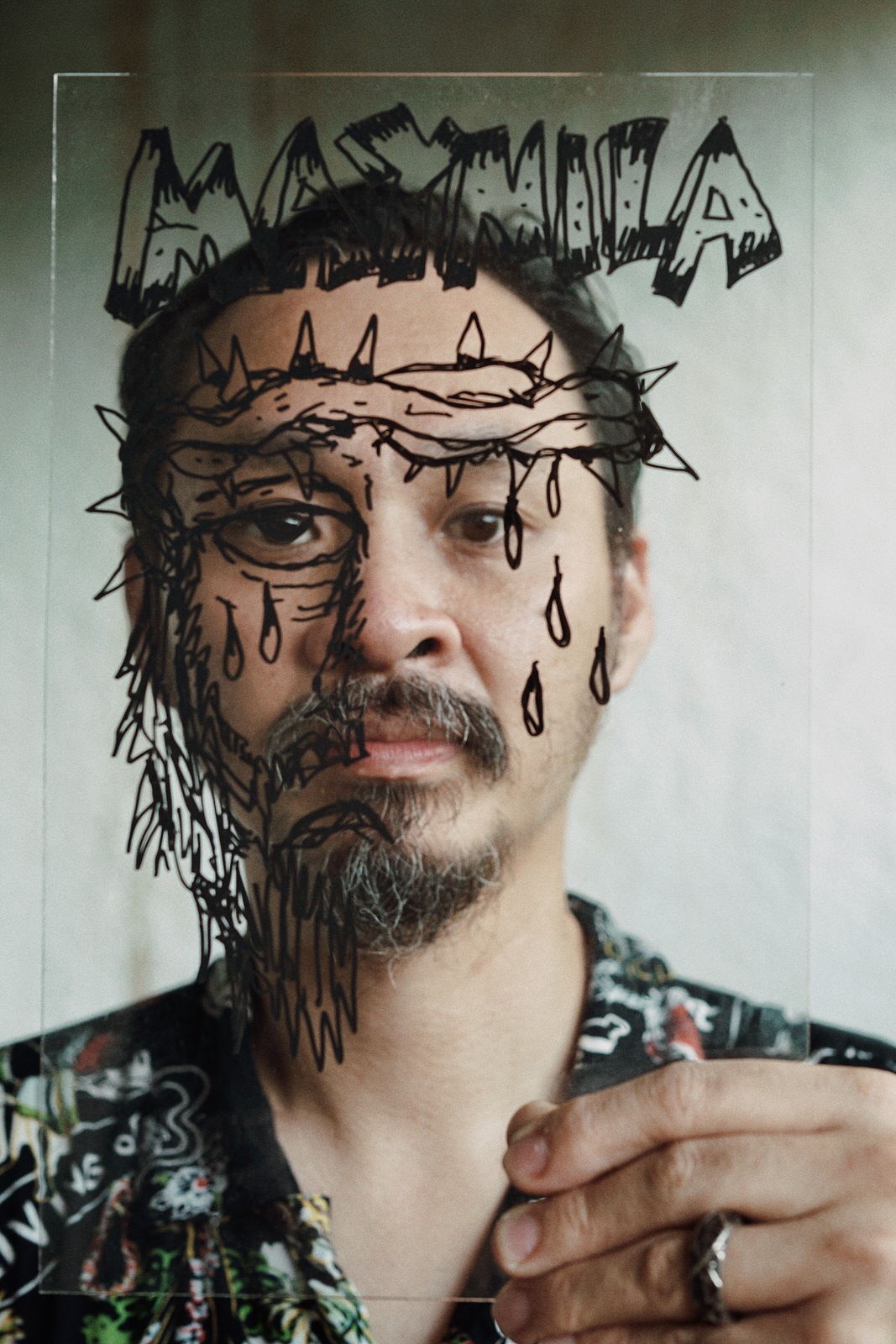
How were you able to carve out your own creative path and find the creative space that you’re fully comfortable and content with?
I guess I just did what I wanted back then and until now. I didn’t let anyone dictate to me what kind of art is ‘accepted.’ For one, I get my inspiration from the streets, all over Manila, emotions, the news, my friends’ stories, and even tattoos because these are the things that genuinely interest me. And people resonate with my art and my work because of these inspirations.
I believe in the Law of Attraction. Because I am free to get inspiration from the things I’m passionate about, I get to churn out good work.
But the most important principle I’ve lived with is as long as you are happy with what you are doing and you are not causing harm to anyone, just keep on doing it.
What were the challenges that you had to face as a creative and how did you overcome them?
Creative block. This is something that almost all artists go through at least once. Whenever I get hit by it, I just take a step back and either do other forms of art or do other things completely. I like going to the beach or riding a bike to unwind. It’s important to pause, refresh, and restart before diving back in again.
Images by Erika Yamaguchi-Garcia
You mentioned that you still do things mostly the old school way. What value do you see in doing manual work?
Admittedly, one of the biggest challenges for me is keeping up with technology and new tools to create designs and artworks. I still do it the old school way—manual drawing with ink, scanning it, and rendering it manually or using a digital mouse. In that sense, my process is a bit slow, but this is what I’m used to. But nowadays when I need a faster process, I started using my iPad Pro and tablet because I know eventually I need to keep up with new technology.
But I believe the edge of doing manual work is that type of process feels more raw and authentic.
How do your various experiences shape the way you approach your work now?
The biggest lesson I learned before that I still embody until now as a full-time artist is discipline when it comes to work. When I worked in corporate, I really learned to meet deadlines, submit on time, respect the client, and respect the work.
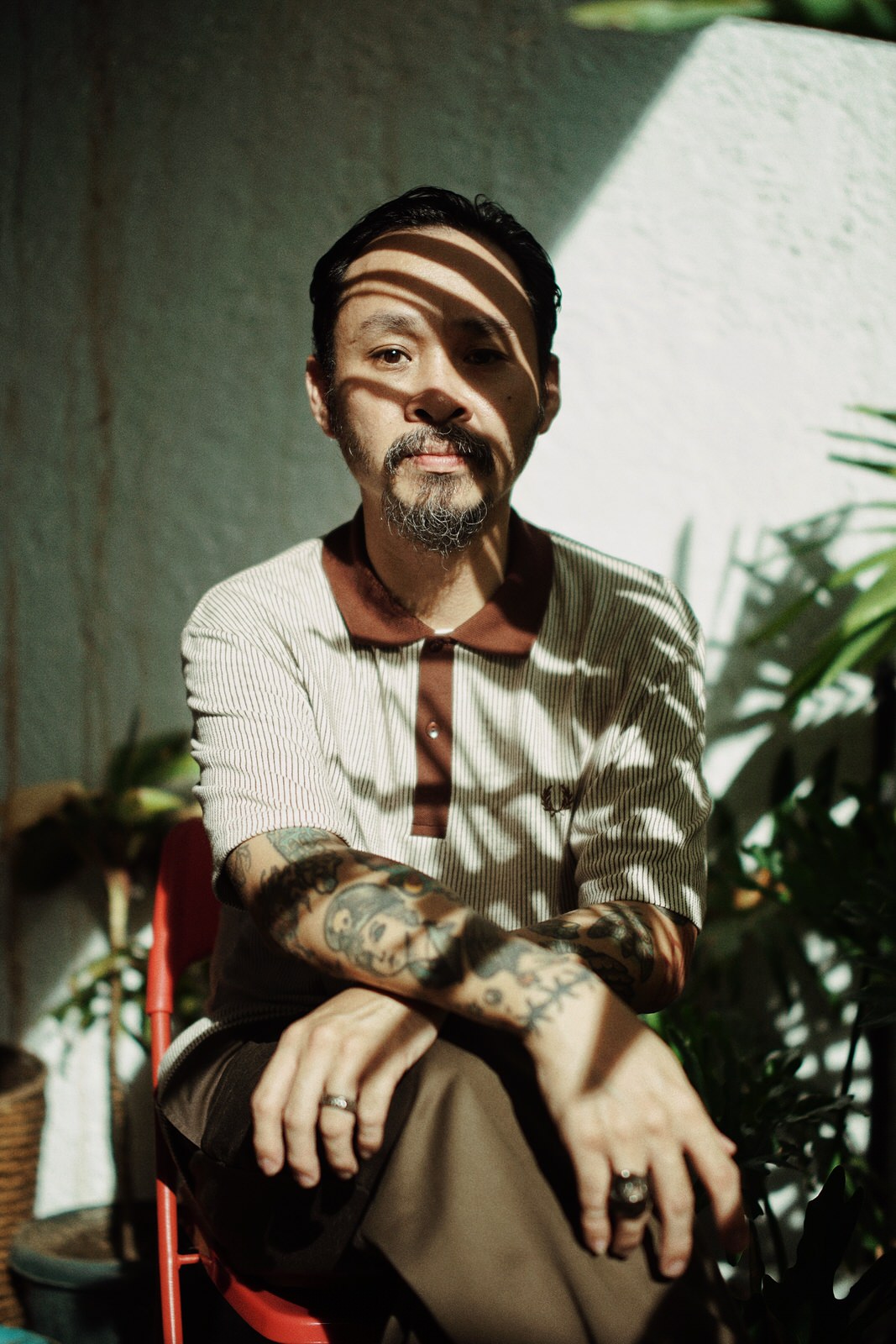
You delve in different art forms like graffiti art, design, how were the shifts like? Are there differences when it comes to your approach?
It’s fun because it’s a new canvas, a new medium, and a new process for every field like mural, digital design, illustration or something else. Different practices, but still the same style.
From graffiti to design to illustration, everything must be aligned in terms of style. For me, there should be a significant look or feel or story. When other people see your art, even if it’s in various media, they should be able to tell that it’s yours. It must be consistent because that’s your identity as an artist.
You said your style is consistent across different media, how would you describe it?
All I can say is my style revolves around the themes of Americana tattoo culture fused with Manila imagery like religious icons, as well as hand-drawn typography inspired by Filipino jailhouse tattoo and brute art.
Tell us something about the work you do on your merch. How did that come about?
It started back in 2006. As an artist, I wanted to have a different canvas for my work, and one of those is a t-shirt. The t-shirt resonated with me because it is like a walking advertisement of your work. Also considered as merchandise, the t-shirt could be sold to help sustain yourself. The rest is history.
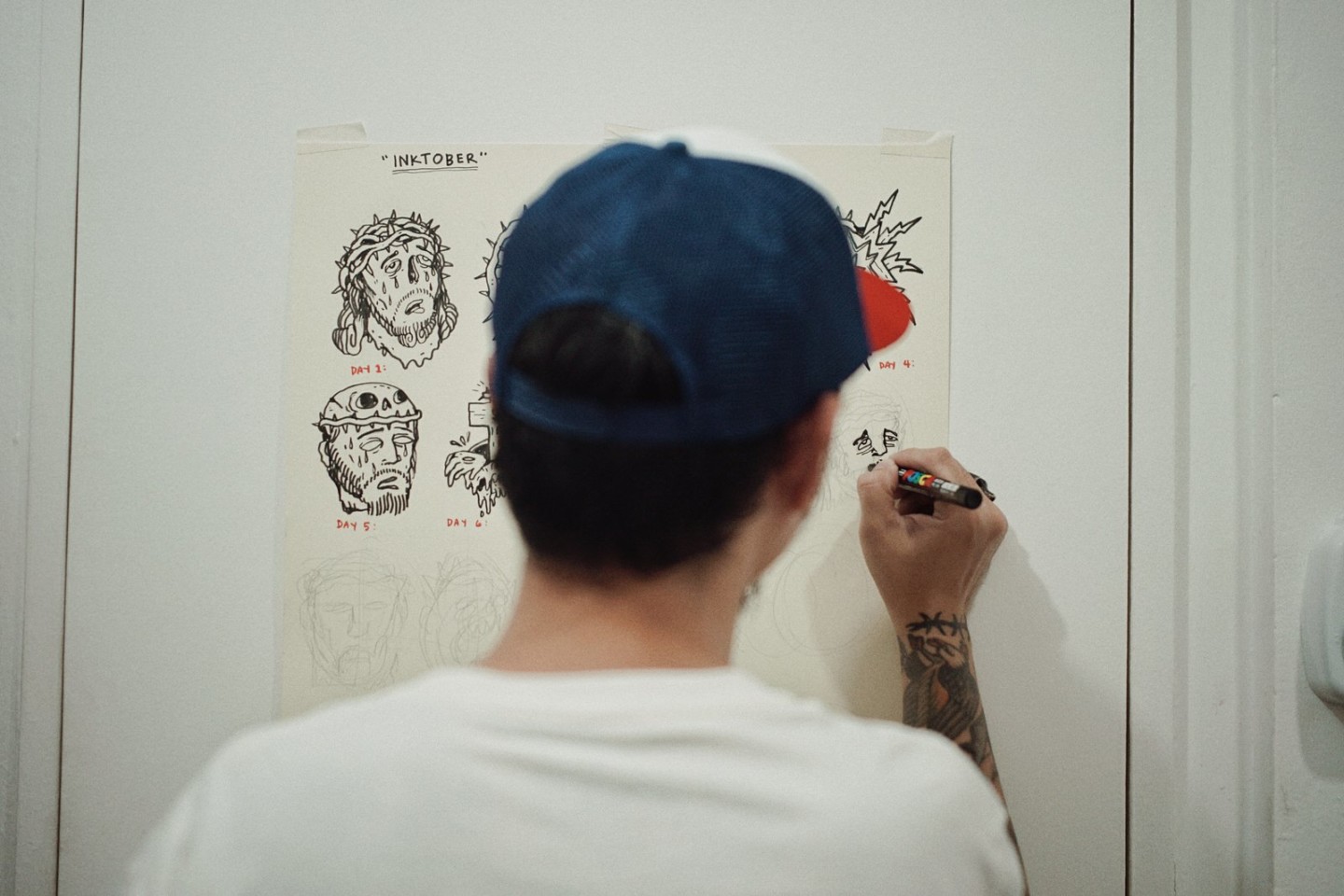
With your experience in creating art outside the canvas—t-shirts, nalgene bottles, headwear, skateboards, and more—what is the significance of merch culture to you? What’s your perspective in making art more democratic?
No matter what it is, I consider merch as another canvas for my artworks. The merch I create and release are items that I am interested in and use. I don’t release merch just for the sake of releasing it. As long as I am happy with the work, I am content.
As for making art more democratic, as an artist, as long as you create works that you are happy about, I consider that democratic art.
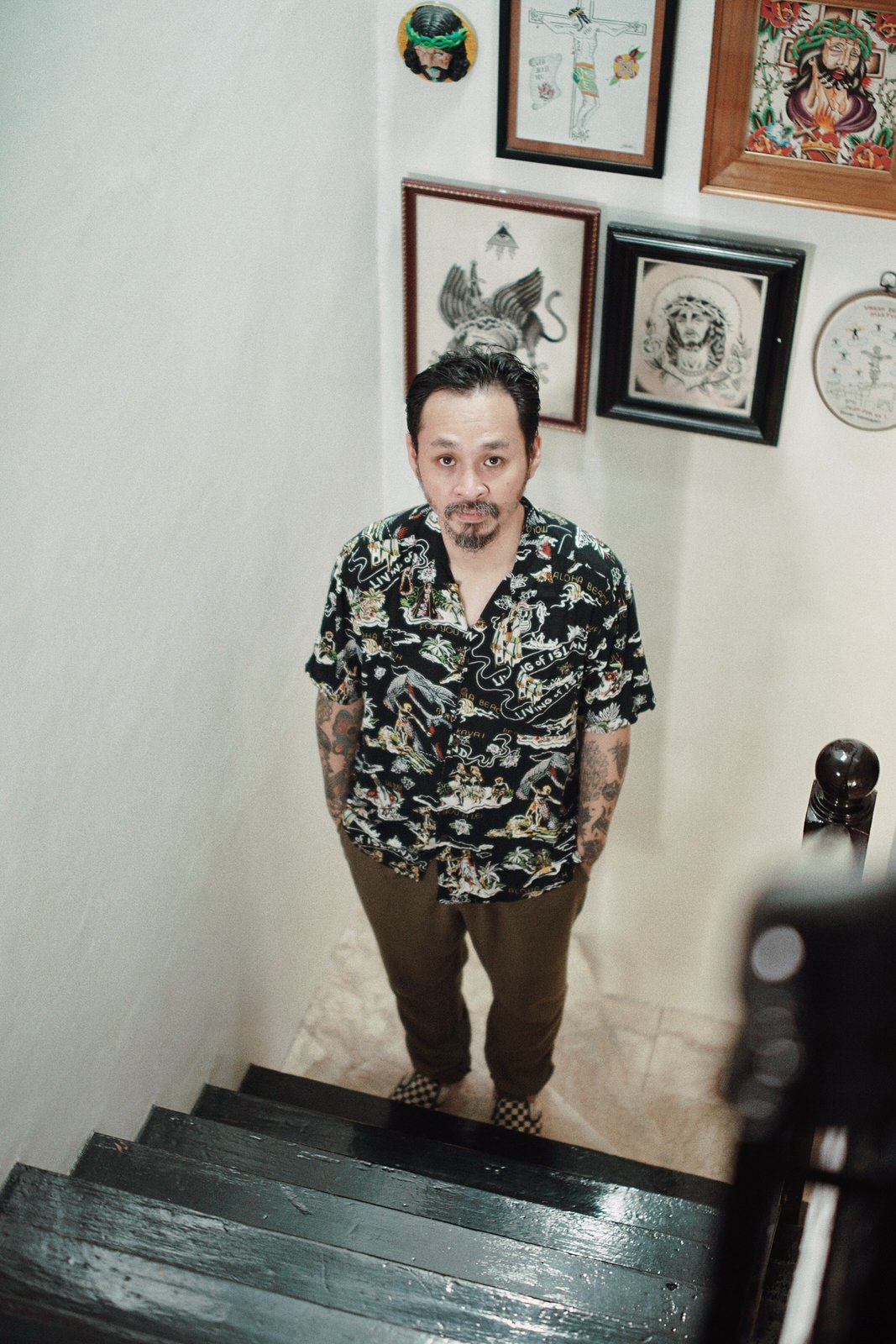
Can you share to us your inspirations?
I have a lot. First off, it all started when my brother, Shan Fontanilla, exposed me to art when I was younger. He’s probably my biggest inspiration because he’s one of the main reasons why I got into art. Then in college, it was my professor and good friend, Wesley Valenzuela. In street art, it’s Shepard Fairey. I am also inspired by Ed Hardy, Mike Giant, but these days, my fellow artists and friends have a stronger influence on me.
Lastly, what’s your advice for creatives who are looking to carve their own path in art?
Just do whatever is right and whatever makes you happy. Don’t let society dictate what you should do and don’t step on others just to get to where you want to be. Respect the industry.
“I wanted to translate the feeling of community—especially gathering like what we used to do for the likes of Pursuit Fair. I wanted to imagine the ideal setup of different people, creatives, and brands coming together in one place since we have been in isolation for the past year.” — Auggie Fontanilla on his design for our collaborative t-shirt.
You can shop the t-shirt straight through the button or by visiting shop.purveyr.com
SUPPORT PURVEYR
If you like this story and would love to read more like it, we hope you can support us for as low as ₱50. This will help us continue what we do and feature more Filipinos who create. You can subscribe to the fund or send us a tip.
1 Comment
Add comment Cancel reply
You must be logged in to post a comment.

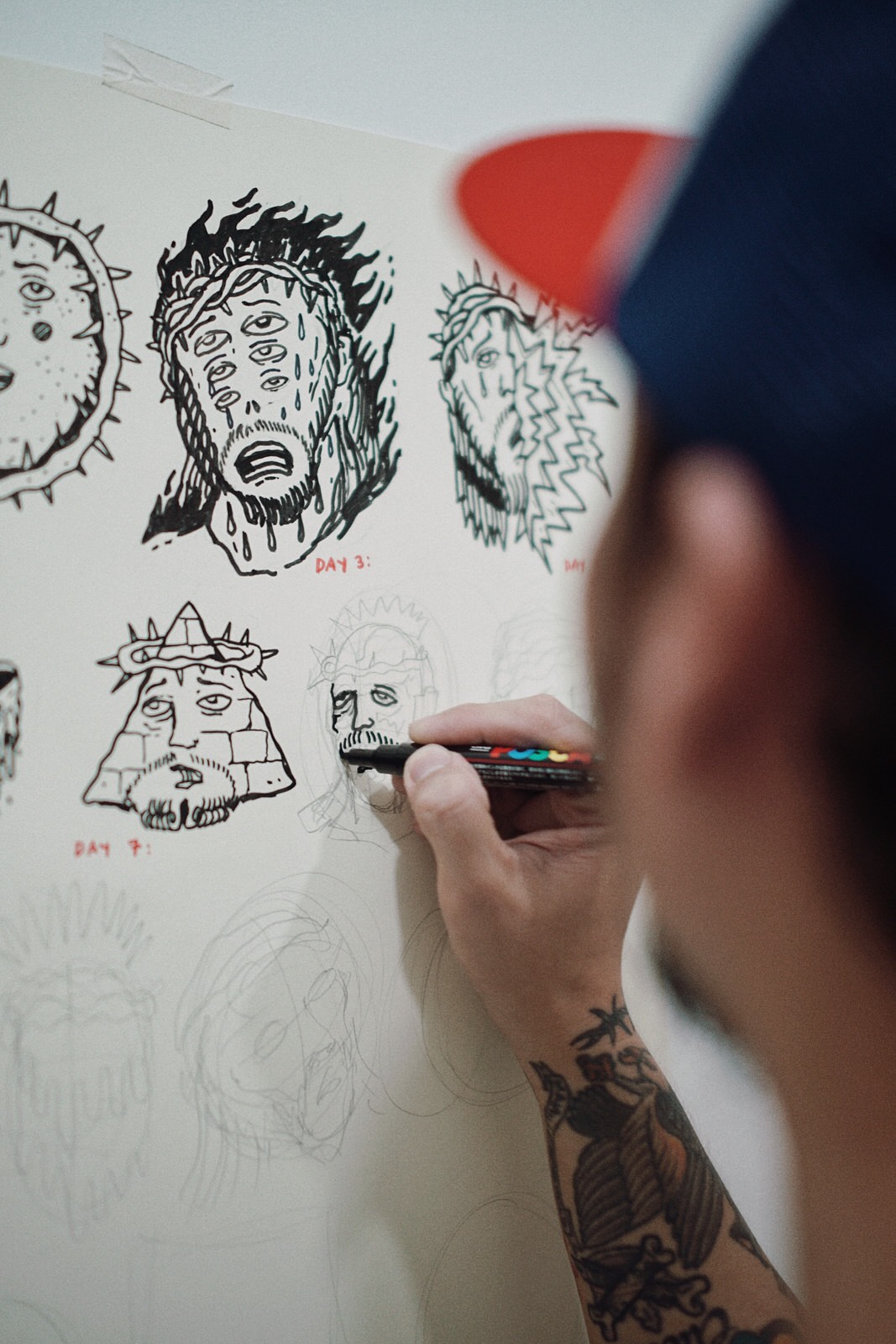

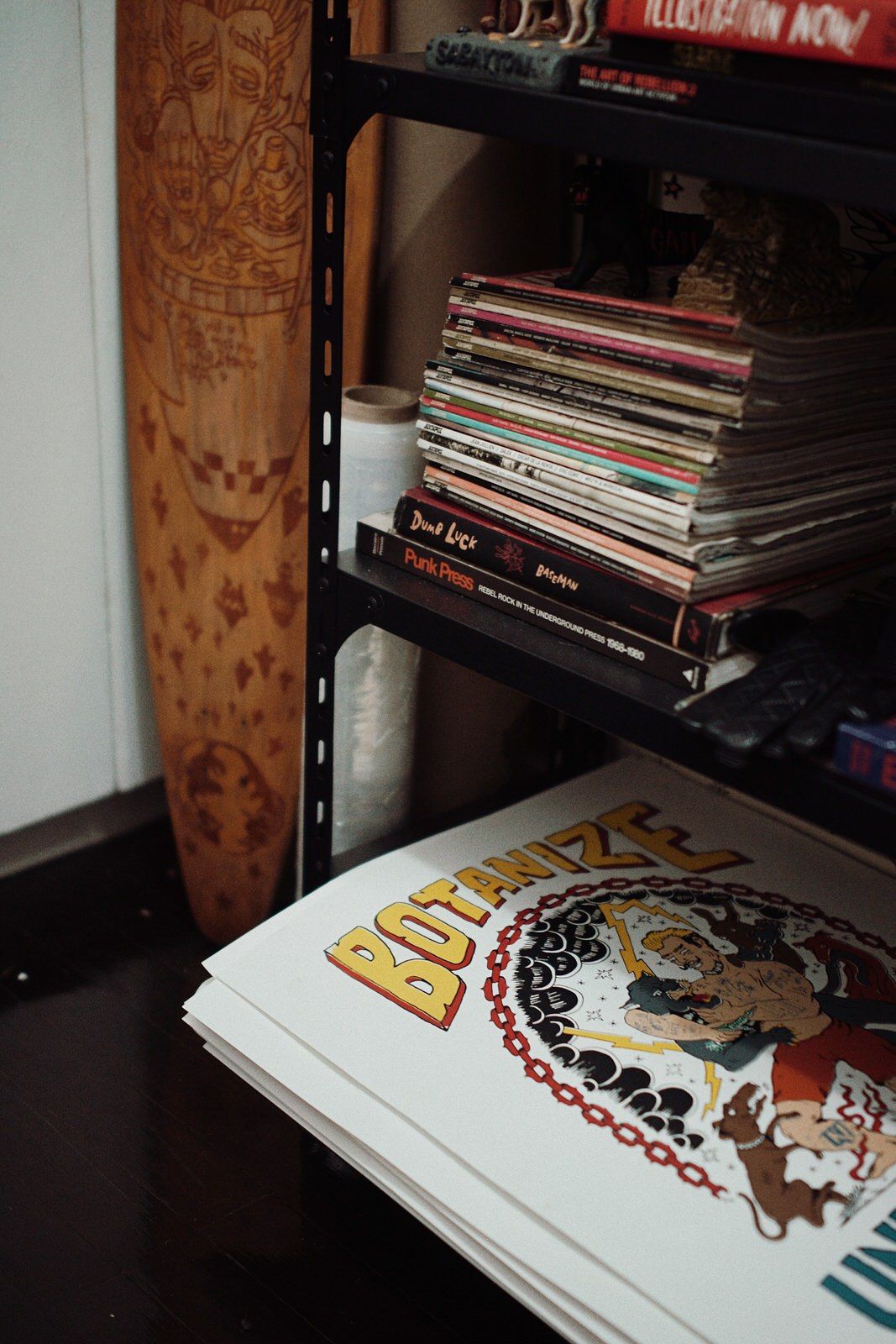


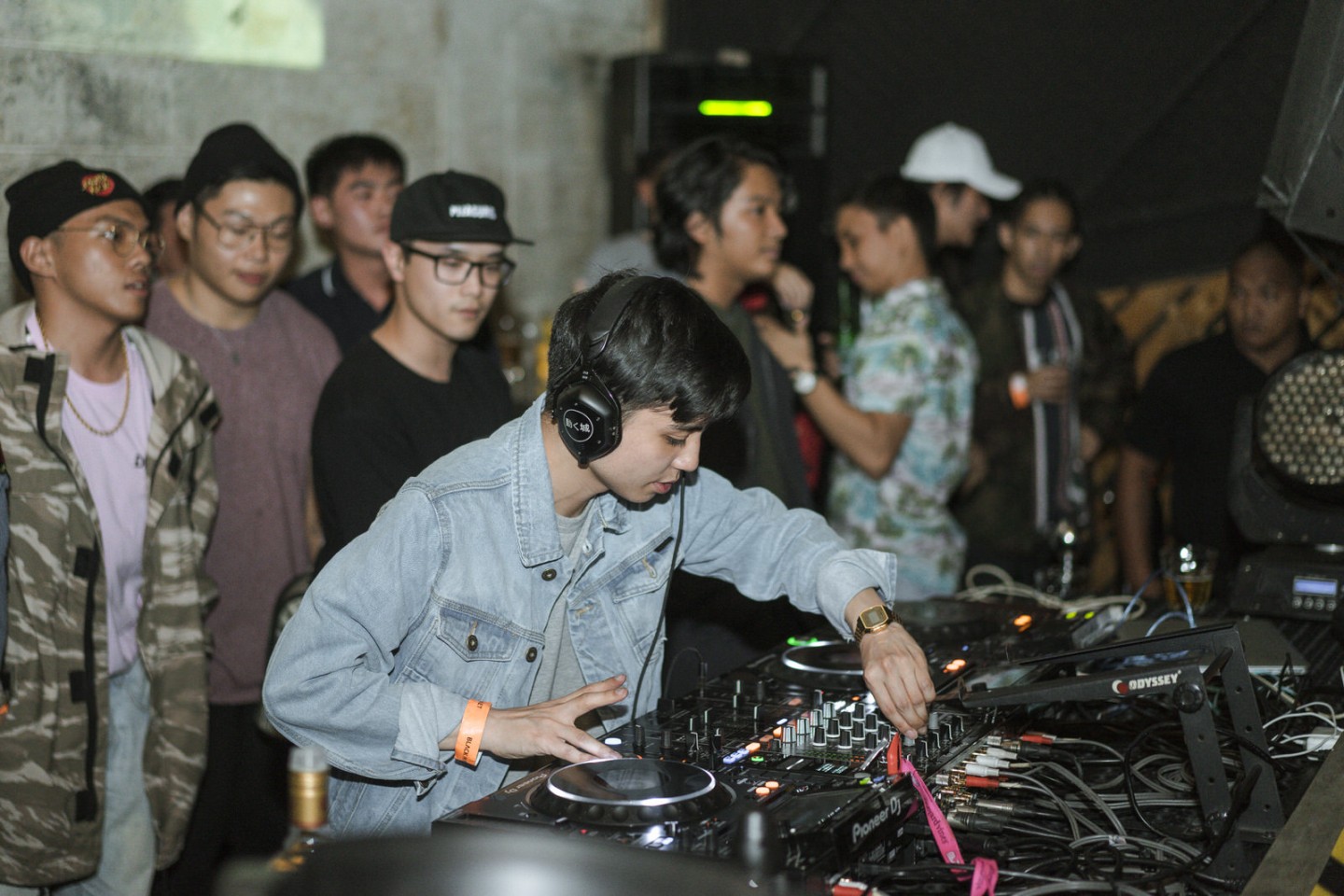

[…] later, he became part of Pilipinas Street Plan (PSP) (where Mark Salvatus and Auggie Fontanilla were a part of as well) as one of the first contemporary artists in the collective. PSP gave birth […]